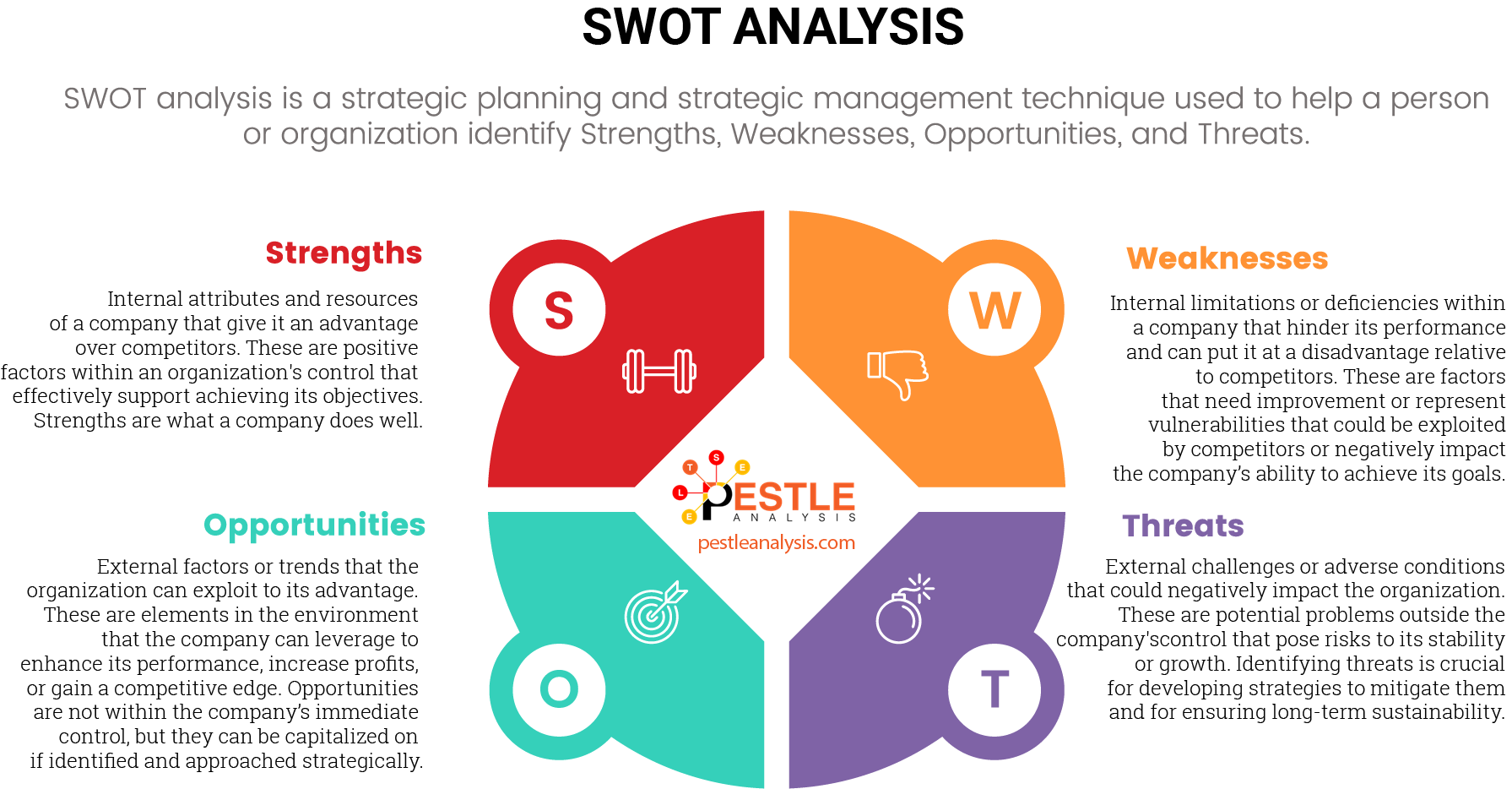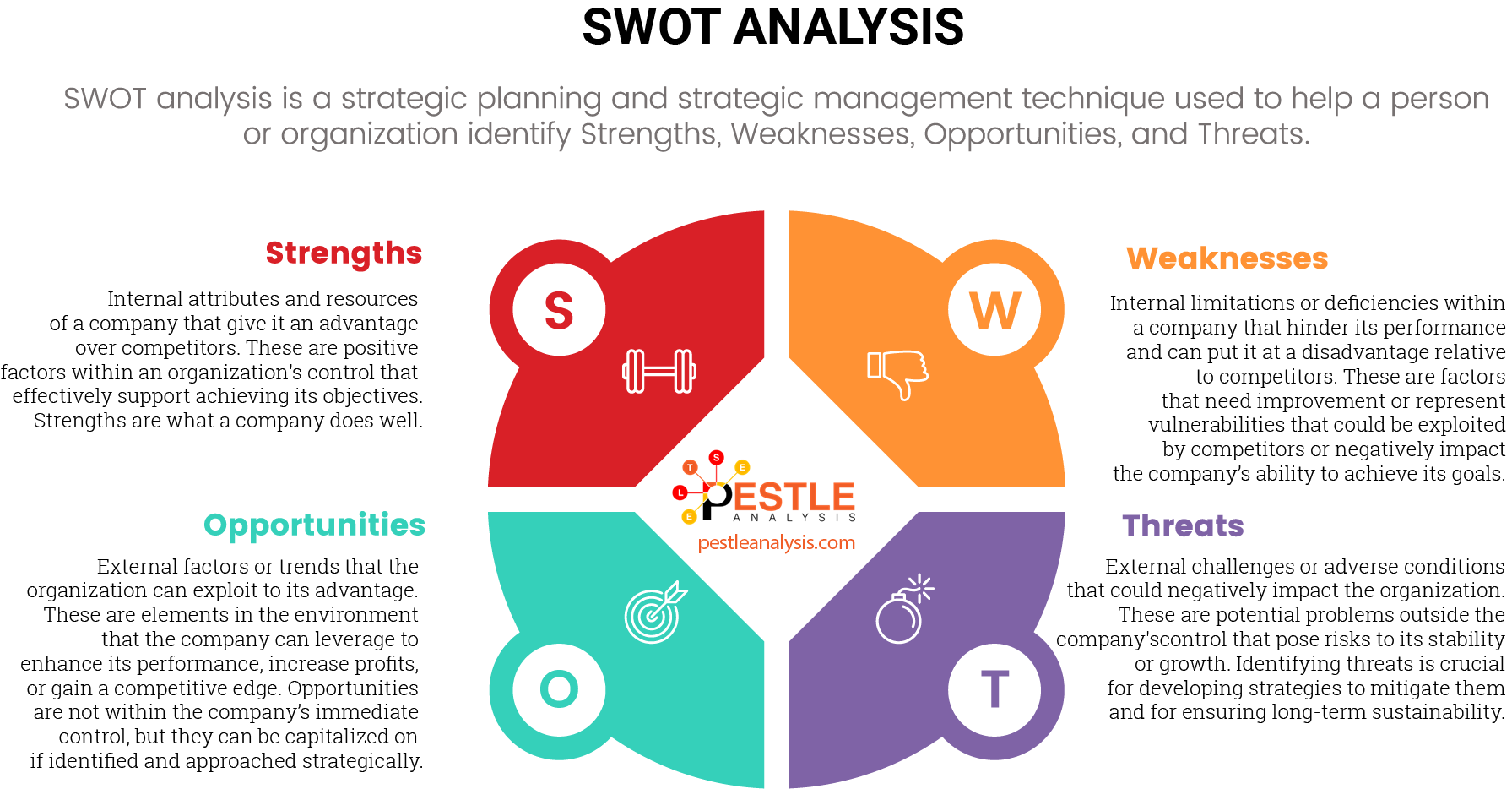SWOT stands for Strengths, Weaknesses, Opportunities, Threats. Together they form an analysis to help you develop a business, product or idea.
SWOT is a type of analysis conducted by a business analyst, team, and/or individuals who intend to develop a plan of action. It’s applicable to any industry, even oneself, but is primarily used for companies and products.
It’s a tool for highlighting four key traits: strengths, weaknesses, opportunities, and threats.
To see the benefits, you need to know what SWOT stands for and how to use it.
S in SWOT stands for Strengths
Strengths (or the ‘S’ in SWOT) are positive traits. They reflect what’s working for your company, product, or another topic you’ve chosen for this analysis. In other words, they’re what set you apart from your competitors and give you an advantage.
Perhaps you have sleeker packaging compared to your top competitor. Or your company actively converses with customers online while your competitor can barely operate a computer.
You want to play up your strengths. Use them to your advantage and decide how to manipulate the strengths to keep them active.
Identifying strengths is the first of the four parts of the SWOT analysis. But the next step is objectively more difficult.
W in SWOT stands for Weaknesses
The ‘W’ in SWOT stands for weaknesses. Depending on the focus of your analysis, weaknesses may be the most important list to factor in.
Weaknesses are problems. They leech away at your business — sometimes obviously, sometimes not so much. If you market your business through fliers rather than through social media, which is where your customers are, that’s a big problem. You’re not getting customers so the business is essentially dying.
If your shipping costs $2 more than your competitors, it’s a weakness. But it won’t necessarily turn all your customers away.
Weaknesses have the ability to change if you acknowledge them. And that's what SWOT aims to do.
And they suggest opportunities.
O in SWOT stands for Opportunities
Opportunities stand for the third letter in SWOT. You highlight opportunities to stamp out weaknesses (if possible) and to acquire new strengths to add to that list.
Some people think opportunities just happen: we either miss them or we use them. But it’s not a random lottery. At least, it doesn’t have to be.
Opportunities blossom from strengths and weaknesses. You may be corresponding with a big influencer in your industry. The opportunity? To work with them — you’ve already got a connection. And it could bring more online recognition.
But you can also create opportunities from weaknesses. Whatever you have written in your weaknesses list, you can spin into a positive. As soon as you start a plan of action to tackle weakness, you’ve hatched opportunities.
Whether you use them or not is up to you. But it can become a threat if you don’t.
T in SWOT stands for Threats
Threats are the ‘T’ in SWOT. They’re similar to weaknesses. They have the potential to hurt your business or product. But they also can appear out of nowhere.
A threat can be a lack of funding for a new project. It threatens the entirety of the project before development even starts. Or it can stem from weaknesses that are left unattended. Like if your team has been unhappy, and now, months later, they’re leaving for rival companies one by one.
Consider threats internally and externally. Then, measure the level of impact each threat can have.
Strengths, weaknesses, opportunities, and threats.
That's what SWOT stands for.
Together, they form a SWOT analysis to help you further develop a business, product, industry, or idea. It costs nothing but time to use — unless you’re after fancy designs.

And yet, after completing it, you’ll be in a stronger state to go against competitors.


